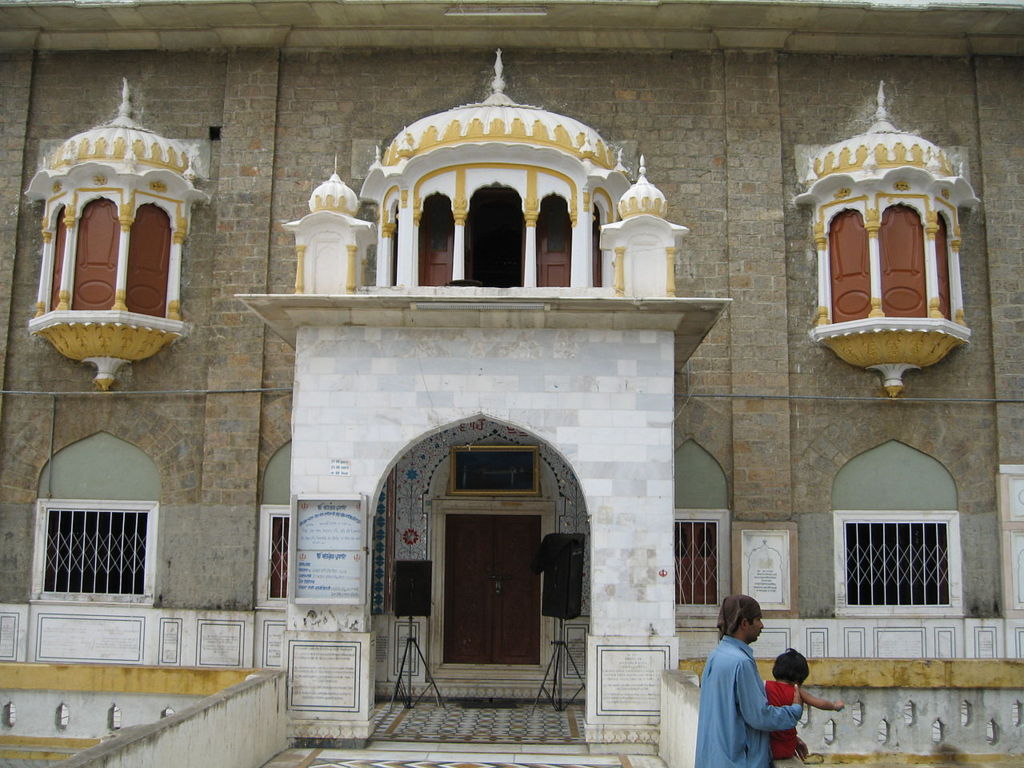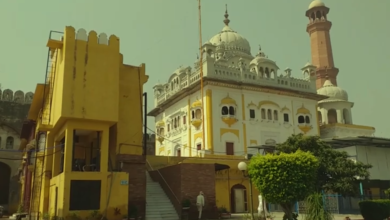Gurdwara Panja Sahib | History of Panja Sahib Gurdwara

Pakistan is home to many Sikh Gurdwaras but some of them are more important including Baba Guru Nanak’s birthplace in Nankana Sahib district, Darbar Sahib the final resting place of Baba Guru Nanak in Kartarpur Sahib, and the Panja Sahib Gurdwara in the city of Hasan Abdal, where Guru Nanak’s handprint is stamped on a stone. These sites are visited by thousands of Sikhs from all over the world. Panja Sahib is one of the three holiest sites in Sikhism after Nankana Sahib and Darbar Sahib.
Panja Sahib is one of the most significant Gurdwara in Punjab, Pakistan because the presence of rock has the handprint of Guru Nanak imprinted on it. In April, a number of Sikh pilgrims from all over the world reached Gurdwara Panja Sahib in Hassan Abdal to attend the Baisakhi festival, also called Vaisakhi, celebrations. The Baisakhi festival is very important because of the month of Baba Guru Nanak’s birth. It’s said that the Sikh religion was practically founded on that day.
During the visit to Gurdwara Panja Sahib, the Government of Pakistan provide fool proof security to pilgrims. Pakistan takes immense pride in preserving sacred religious places and providing necessary facilitation to the visiting pilgrims.
Religious Tourism – Sikh Special Tours

Location of Gurdwara Panja Sahib
Gurdwara Panja Sahib is one of the most sacred sites in Sikhism that is situated at Hasan Abdal, Punjab Pakistan. It’s about 65 kilometres from the capital, Islamabad. Hassan Abdal also has many historical sites.
History of Panja Sahib
Gurdwara Panja Sahib was established in the era of Maharaja Ranjit Singh (1780-1839). It was made by Hari Singh Nalwa, the most famous Commander-in-Chief of Ranjit Singh. It is named after Baba Guru Nanak’s ‘Panja’ or hand-print, which can be seen on a boulder nearby. Earlier, the site was destroyed by invaders from Afghanistan. But it has been safe since Hari Singh Nalwa made it. Many parts of the Gurdwara were rebuilt in 1920.

Features of Panja Sahib Gurdwara
Panja Sahib Gurdwara is a masterpiece of architecture, made like a fort. It’s based on a square orientation that is surrounded by a Srover Sahib (holy water pool) whose depth is approximately 5 ft. A large double-storied hostel for the pilgrims surrounds the courtyard, Srover Sahib, and the Gurdwara.
The rock with the hand imprint is embedded in the concrete structure of the Panja Sahib building complex. A deep imprint of a right hand is visible on the rock. Clear fresh water gushes out from behind the rock and spills over into a large Srover Sahib. The Sarovar Sahib is a holy pool where Sikhs do “Ashnan” and “Mahseer” fish enjoying their swim in spring water.

There is a langer khana that is an integral part of every Gurdwara. Langer is the tradition of serving food at each Gurdwara service to the whole community regardless of social status, gender, or faith. Before entering the Gurdwara, you will see many marble slabs embedded in the walls and the floor with the names of the donors who contributed to making the Panja Sahib Gurdwara. A large three-story primary school is also placed in Gurdwara where children of all religions and faiths are educated.
Gurdwara is equipped with modern facilities. The management of Pakistan Sikh Gurdwaras Prabandhak Committee (PSGPC) provide funding and maintains all the Gurdwara in Pakistan.
07-Days Sikh Pilgrimage Tour – Kartarpur
Shrine of Baba Wali Qandhari
At some distance from Panja Sahib on the hill is a Shirine of Baba Wali Qandhari. It’s surrounded by mountains that offer some of nature’s most glorious moments. From here you can see the beautiful view of Panja Sahib Gurdwara and the whole city. Whose ever visits Panja Sahib also goes to Wali Qandhari Shrine.




